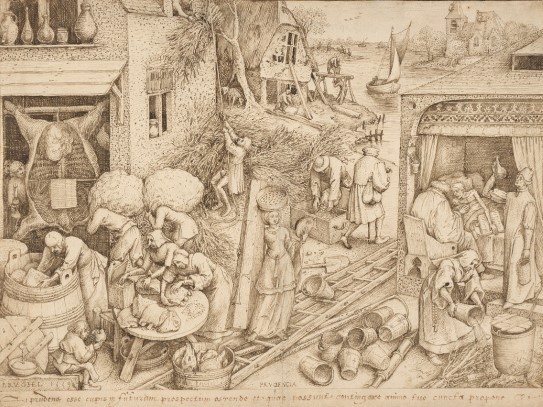Prudence
Pieter Bruegel the elder
Transcription
Stephan Kuhn
When you enter the exhibition room, a small drawing by Pieter Bruegel the Elder is eye-catching. The drawing with the Latin title "Prudentia", which means "Wisdom" or "Caution", is a so-called template - a precisely prepared draft - of a copper engraving. It belongs to a series that Bruegel created about the Seven Virtues.
Narrator
This is Stephan Kuhn, art historian at the National Museum
Stephan Kuhn
The picture shows various events that can be associated with "prudence" and "caution":
Wisdom is one of the classical virtues, here personified as a female figure in the middle of the motif. The mirror in her hand symbolizes self-awareness, while the coffin at her right represents death. On her head she wears a sieve to separate good from evil, lie from truth. The cityscape, which she is surrounded by, is dotted with figures that are busy with everyday tasks.
The scenes symbolize wisdom in different ways. The ladder and fire extinguishers warn of the fire hazard. In the butcher scene on the left, people are preparing for famine. Firewood is stored, and roofs are repaired in preparation for winter. The scene on the right depicts a terminally ill man who has written his will and is preparing to die.
In addition to prudence, temperance, justice, courage, faith, hope, and love make up the other virtues in this series. A few years earlier, Bruegel had completed the series of "The Seven Deadly Sins". At the same time as the symbolic representation, the detailed drawing reflects everyday life and reality in a direct way that was characteristic of Bruegel's works.
Narrator
The drawing is signed and dated at the bottom left. The title at the bottom center is applied by Bruegel himself, while the inscription below the motif is written by someone else:
Be wise, always think of the future and be prepared for what may happen...